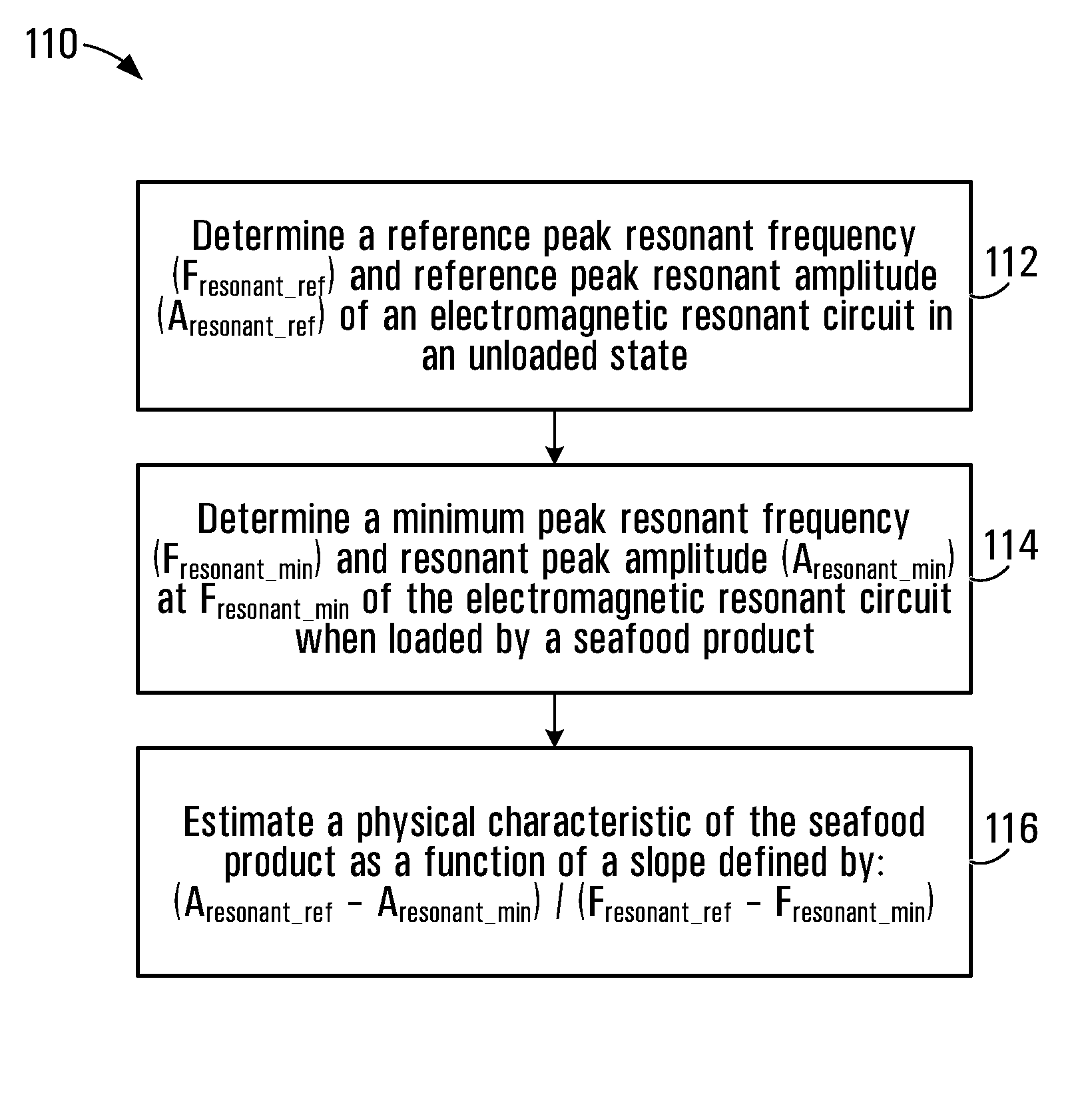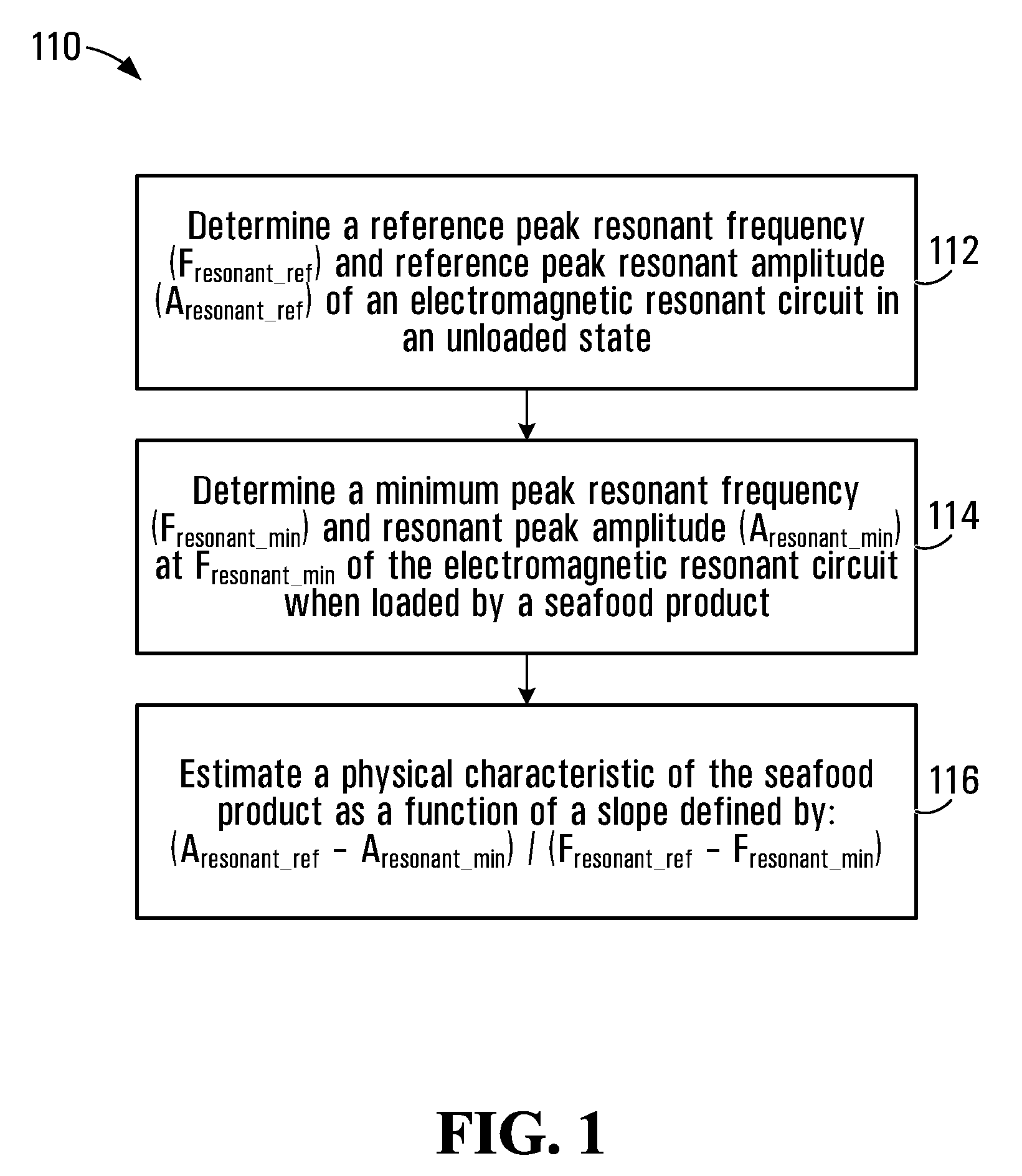Seafood physical characteristic estimation system and method
a physical characteristic and estimation system technology, applied in the field of non-invasive electromagnetic sensing, can solve the problems of high cost of seafood, low meat yield of soft shell crustaceans, and large post-molt crustaceans, and achieve the effect of a greater level of confiden
- Summary
- Abstract
- Description
- Claims
- Application Information
AI Technical Summary
Benefits of technology
Problems solved by technology
Method used
Image
Examples
Embodiment Construction
[0105]Various systems and methods for non-invasive estimation of one or more physical characteristics of seafood products such as lobsters and other crustaceans, such as scallops, crabs, mussels and sea urchins are provided. Embodiments of the present invention may provide for online physical characteristic estimation at typical production speeds and / or grading and separation of low and high meat yield seafood products at typical production rates at any stage of seafood processing. For example, some embodiments of the present invention are used at typical production rates of 90 crustaceans per minute, with peak rates of close to 120 crustaceans per minute. Other embodiments may be suitable for production rates higher or lower than these typical average and peak rates.
[0106]Some embodiments of the invention exploit the fact that the resonant frequency and amplitude of an electromagnetic resonant circuit will change when the circuit is “loaded” with an object that interacts with the e...
PUM
| Property | Measurement | Unit |
|---|---|---|
| operating frequency | aaaaa | aaaaa |
| operating frequency | aaaaa | aaaaa |
| frequency | aaaaa | aaaaa |
Abstract
Description
Claims
Application Information
 Login to View More
Login to View More - R&D
- Intellectual Property
- Life Sciences
- Materials
- Tech Scout
- Unparalleled Data Quality
- Higher Quality Content
- 60% Fewer Hallucinations
Browse by: Latest US Patents, China's latest patents, Technical Efficacy Thesaurus, Application Domain, Technology Topic, Popular Technical Reports.
© 2025 PatSnap. All rights reserved.Legal|Privacy policy|Modern Slavery Act Transparency Statement|Sitemap|About US| Contact US: help@patsnap.com



